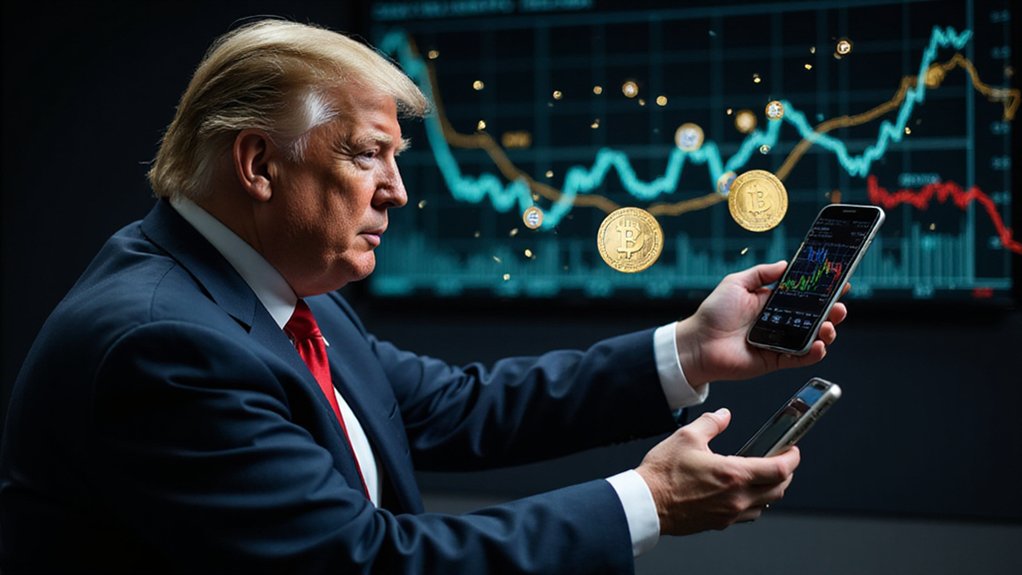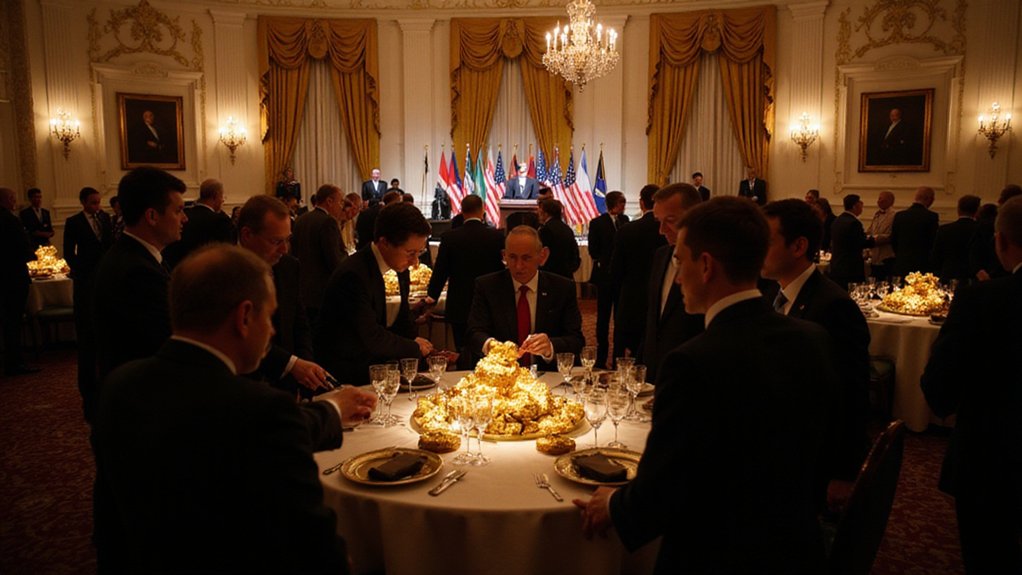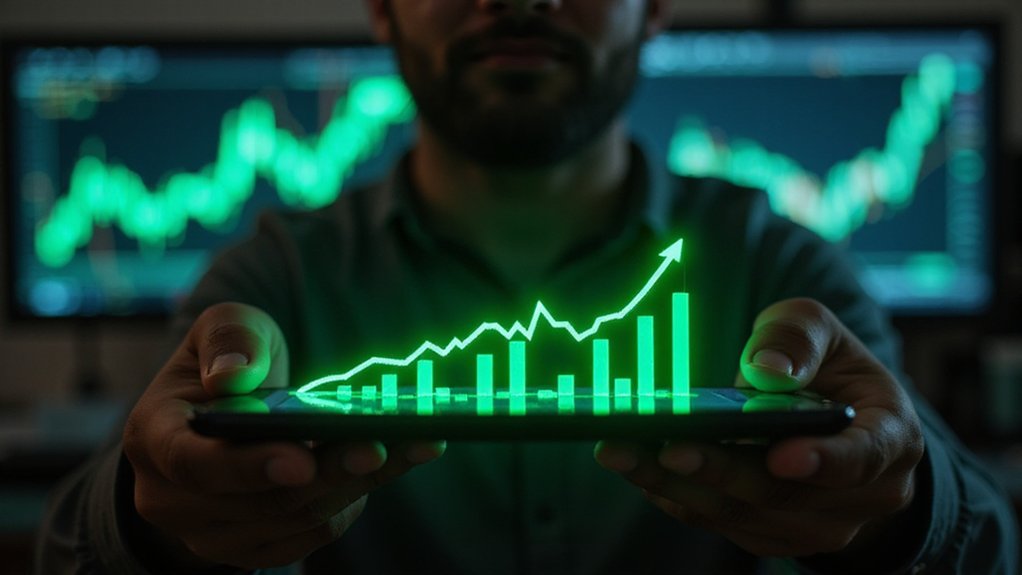The meteoric rise of TRUMP coin—a cryptocurrency that bears the name of the 45th President—has captivated both digital asset enthusiasts and political observers alike, demonstrating once again the peculiar intersection of celebrity, politics, and speculative finance.
Currently trading at $39.50, the token has experienced a remarkable recovery after plummeting 88% from its post-listing peak of $75.35, with the reversal triggered by something as mundane as a presidential dinner invitation—a evidence to the market’s sensitivity to symbolic gestures rather than fundamental value propositions.
The $7.9 billion market cap cryptocurrency has generated eyebrow-raising trading volumes of $25.97 billion, yielding a volume-to-market-cap ratio of 328.71%—a figure that would make traditional market analysts reach for their antacid.
Trading volumes reaching 329% of market capitalization indicate speculative frenzy rather than sustainable investment thesis.
With 200 million tokens in circulation (against a total supply of 1 billion), the diluted valuation stretches to $39.5 billion, a sum that rivals established mid-cap companies with decades of operational history and actual revenue streams. The gradual release of the remaining tokens over three years could lead to market dilution unless demand continues to grow proportionally.
Like other meme coins, TRUMP coin’s value is largely driven by community sentiment and social media buzz rather than technological innovation or practical utility.
Looking ahead, analysts have constructed a remarkably wide spectrum of price projections for 2025, ranging from a bearish $35-$67 to bullish targets between $120-$300. These forecasts hinge on several variables, not least the implementation of a promised January 2025 executive order deregulating crypto markets and explicitly prohibiting CBDC development—policy positions that, coincidentally or not, align with the token’s ostensible raison d’être.
Commercial adoption trends show promise, with Trump-branded merchandise sites now accepting the token as payment, though utility remains largely speculative. The long-term outlook extends to 2030 possibilities of $500+, contingent upon the 2028 election outcome and broader market conditions.
Critics highlight potential conflicts of interest, market manipulation concerns, and the token’s susceptibility to hype cycles—risks exacerbated by its meme coin characteristics. The ownership structure raises additional questions as CIC Digital LLC and Fight Fight Fight LLC control 80% of the meme coin. Nevertheless, in a market where rationality often takes a back seat to narrative, TRUMP coin exemplifies how financial instruments increasingly function as vessels for political identity and speculative fervor rather than economic utility.









